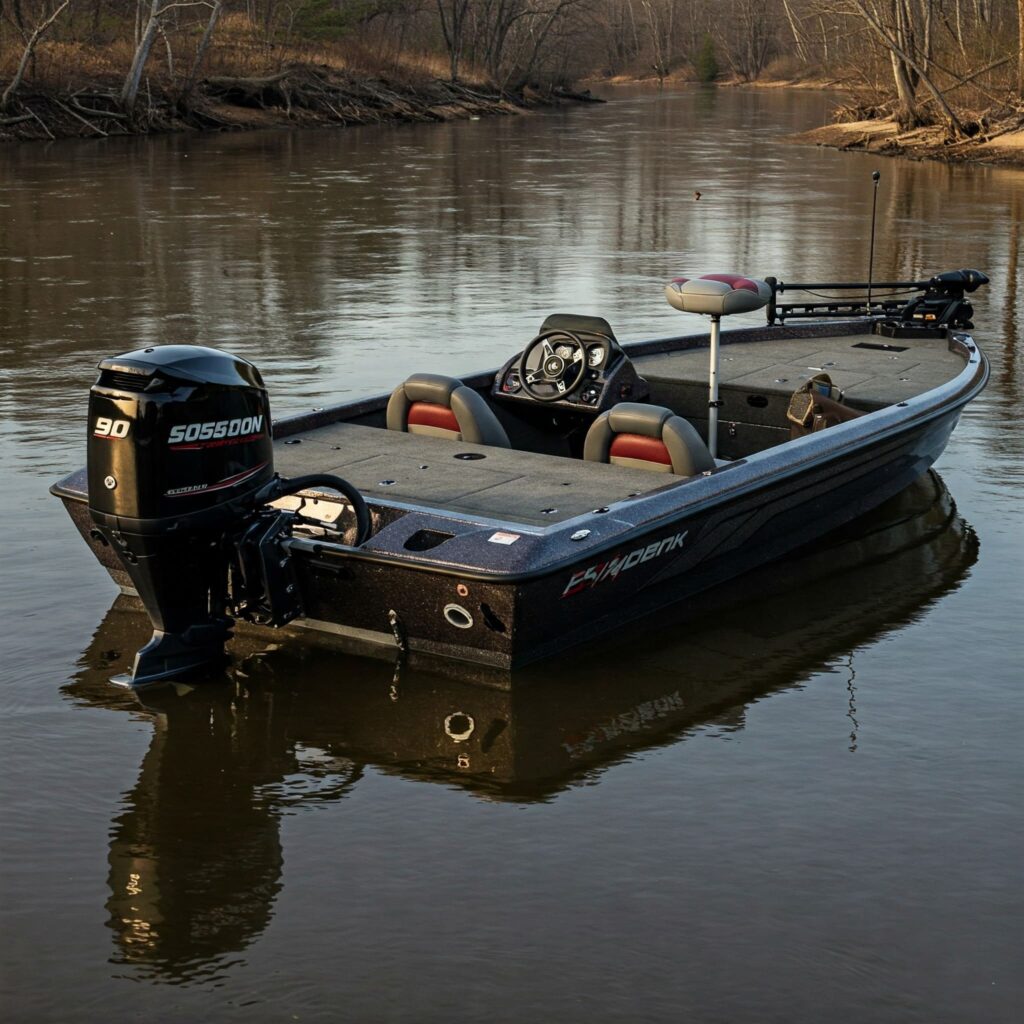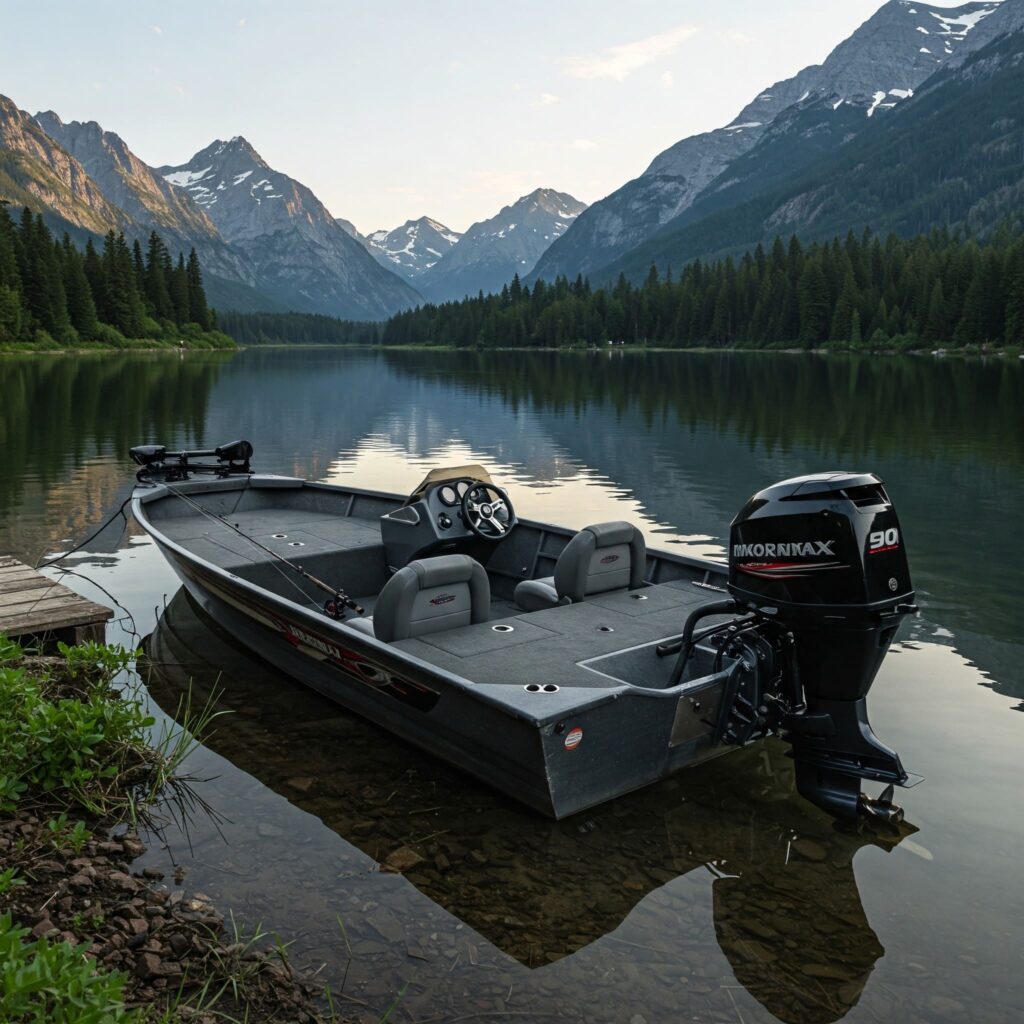Choosing the right synthetic 2-stroke oil for your outboard motor is essential for ensuring efficient operation, reducing emissions, and preventing engine wear. This article compares Pennzoil Marine XLF Synthetic Blend 2-Stroke Oil, Evinrude XD100 Synthetic 2-Stroke Oil, and AMSOIL Outboard 100:1 Pre-Mix Synthetic 2-Stroke Oil to help guide your decision.
Pennzoil Marine XLF Synthetic Blend 2-Stroke Oil
Key Features:
- Formulation: Designed as a synthetic blend for 2-stroke engines operating in marine environments.
- Throttle Protection: Minimizes deposit buildup on pistons and combustion chambers.
- Performance: Formulated to reduce exhaust smoke and mitigate issues like plug fouling.
- Compatibility: Suitable for engines requiring TC-W3® certification.
Pros:
- Provides consistent performance in both freshwater and saltwater applications.
- Reduces wear and extends engine life.
- Affordable compared to fully synthetic options.
Cons:
- Contains a synthetic blend rather than being fully synthetic, which can limit its efficiency in more demanding conditions.
- May not perform as effectively at lean oil-to-fuel ratios (e.g., 100:1.)
Evinrude XD100 Synthetic 2-Stroke Oil
Key Features:
- Advanced Formulation: Designed specifically for Evinrude E-TEC outboards.
- Clean Burn: Reduces carbon buildup and smoke in low-emission engines.
- Temperature Control: Offers reliable performance at high operating temperatures.
Pros:
- Fully synthetic oil offers excellent durability for extended use.
- Provides optimal lubrication for low-temperature starts and high-temperature performance.
- Helps maintain the cleanliness of the combustion system.
Cons:
- Primarily recommended for Evinrude engines, limiting its application for other brands.
- May be over-engineered for non-direct injection engines, leading to higher costs with minimal extra benefit in certain situations.
AMSOIL Outboard 100:1 Pre-Mix Synthetic 2-Stroke Oil
Key Features:
- High Efficiency: Designed for low-smoke, 100:1 pre-mix applications while also suitable for richer premix ratios.
- Clean Operation: Reduces varnish, deposit buildup, and carbon accumulation, ensuring long-term engine cleanliness.
- Emission Reduction: Low-smoke and low-odor characteristics minimize environmental impact.
- Cold Performance: Engineered for cooler-operating, water-cooled engines, ensuring proper lubrication and quicker throttle response.
Pros:
- Suitable for a wide range of pre-mix ratios, providing flexibility for various engine requirements.
- Protects against key issues such as ring sticking, deposit formation, and exhaust port blockage.
- Environmentally friendly with reduced emissions and lower oil consumption.
- Clean-burning design enhances user experience, especially for operators sensitive to smoke and odors.
Cons:
- Higher up-front cost compared to conventional and blended oils.
- Best performance observed in marine applications with specific maintenance routines.
Comparison Summary
When comparing these oils, it’s essential to balance performance, environmental impact, and cost.
- Pennzoil Marine XLF Synthetic Blend 2-Stroke Oil is a solid, budget-friendly choice for general usage and offers consistent performance but falls short in leaner oil-to-fuel ratios demanded by some engines.
- Evinrude XD100 Synthetic 2-Stroke Oil performs exceptionally well in Evinrude E-TEC engines, though its narrow focus and higher price may not suit operators with engines outside its primary compatibility.
- AMSOIL Outboard 100:1 Pre-Mix Synthetic 2-Stroke Oil delivers superior performance with cleaner operation, flexibility for different ratios, and protection against a wide range of common issues. Engineered for long-term performance, it stands out for those prioritizing quality and low emissions.
Key Takeaways
Selecting the right oil depends on your engine type, usage patterns, and budget. AMSOIL stands out for its adaptability, protection, and minimal environmental impact, especially at a 100:1 premix ratio. However, Pennzoil and Evinrude remain strong alternatives, especially for users with less aggressive performance requirements or specific compatibility needs. Always consult your engine manufacturer’s recommendations to ensure the best choice for your outboard system.

The Critical Role of Lubrication in 2-Stroke Outboard Engines
2-stroke outboard engines are a favored choice in marine applications due to their high power-to-weight ratio, simplicity, and reliability. However, their performance hinges on proper lubrication. Understanding the unique lubrication requirements, the importance of fuel-to-oil mix ratios (including 100:1 premixes,) and the consequences of neglecting maintenance is essential for any serious boating enthusiast. This article explores these topics in detail, equipping you with the knowledge to maintain optimal performance and engine longevity.
How 2-Stroke Outboard Engines Work
2-stroke outboard engines function by completing a power cycle in two piston movements:
- Compression Stroke: A fuel, air, and oil mixture is compressed in the combustion chamber and ignited.
- Power Stroke: The explosion drives the piston down, delivering power to the crankshaft and propeller.
Unlike 4-stroke engines, 2-stroke models lack a separate oil reservoir. Instead, they rely on oil mixed with fuel or directly injected. This mix simultaneously lubricates the engine’s moving parts and participates in the combustion cycle, meaning proper ratios and oil quality directly impact performance.
The Importance of Fuel-to-Oil Ratios in 2-Stroke Engines
The precise fuel-to-oil mix ratio is vital for lubrication, cooling, and combustion efficiency. Deviating from manufacturer-recommended ratios risks serious damage to internal components.
Common Ratios Explained:
- 50:1 (Standard): Common for most modern 2-stroke outboard engines, ensuring adequate lubrication without significant carbon buildup.
- 40:1 or 25:1 (Richer Mix): Required for older or high-performance engines with higher friction or simpler combustion systems.
- 100:1 (Lean Mix): Achievable with advanced, high-quality synthetic oils specifically designed for this ratio, providing superior lubrication and cleaner burning with minimal residue.
While 100:1 premixes are popular for reducing oil consumption and minimizing exhaust smoke, it is essential to use only high-quality oils capable of providing sufficient protection at this lean ratio. Attempting such a mix with standard-grade oil may lead to under-lubrication and catastrophic engine damage.
The Role of Lubricants in 2-Stroke Outboard Engines
Lubrication in 2-stroke engines serves multiple critical purposes:
- Minimizing Friction: Protects moving parts, like the piston and crankshaft, from excessive wear.
- Cooling Components: Reduces the risk of overheating by transferring heat away from high-friction areas.
- Optimizing Combustion: Ensures clean and efficient burning, reducing carbon deposits and smoke.
- Preventing Corrosion: Guards metal components from moisture exposure, especially in marine environments.
Consequences of Using Low-Quality or Degraded Oils
Using subpar oils can severely impact engine performance and lifespan. Common issues include:
- Increased Wear: Inadequate lubrication accelerates wear on vital components, damaging pistons and cylinders.
- Excessive Deposits: Low-quality oil leads to carbon buildup in exhaust ports, reducing airflow and power output.
- Overheating Risks: Poor heat dissipation puts engines at risk of seizing under stress.
- Reduced Longevity: Inferior protection results in premature failures, increasing repair costs over time.
Degraded oils, even initially high-quality ones, also lose their protective properties over time when exposed to heat, moisture, and contaminants. Proper storage and timely replacement are essential to avoid these risks.

Benefits of High-Quality Synthetic Oils
High-quality synthetic oils designed for 2-stroke engines, particularly those supporting lean mixes like 100:1, offer several advantages:
- Clean Burning: Minimal residue reduces carbon deposits, improving engine cleanliness and efficiency.
- Enhanced Lubrication: Advanced formulations protect components even with reduced oil quantities in high-ratio premixes.
- Temperature Stability: Synthetic oils retain viscosity across extreme temperatures, ensuring consistent performance.
- Longer Engine Life: Superior protection and reduced wear contribute to prolonged engine durability.
- Reduced Smoke Emissions: Cleaner combustion results in less exhaust smoke, ideal for eco-conscious applications.
These oils are essential for modern 2-stroke engines that demand leaner oil mixes while maintaining high-performance standards.
Maintenance Tips for 2-Stroke Outboard Engines
Adopting proper maintenance practices ensures your 2-stroke engine performs reliably:
- Follow Manufacturer Ratios: Use the exact fuel-to-oil ratio specified for your engine, especially if experimenting with leaner mixes like 100:1.
- Use High-Quality Oil: Choose premium synthetic oils that meet or exceed your engine’s requirements.
- Inspect Spark Plugs: Clean or replace spark plugs regularly to maintain efficient combustion.
- Flush After Saltwater Exposure: Rinse the engine with fresh water to remove salt residue and prevent corrosion.
- Monitor Exhaust Smoke: Excess smoke could indicate improper oil mixes or degraded oil quality.
- Store Fuel Properly: Avoid stale fuel by using stabilizers or mixing only as much as needed for immediate use.
- Watch for Signs of Wear: Strange noises, reduced power, or increased fuel consumption are warning signs of lubrication issues.
For a comprehensive guide on servicing your 2-stroke outboard engine, click here to explore expert advice and best practices.
Final Thoughts
The unique lubrication needs of 2-stroke outboard engines demand precision, from fuel-to-oil ratios to the selection of high-quality lubricants. Leaner mixes like 100:1, achievable only with premium synthetic oils, can reduce emissions and increase efficiency without compromising engine protection. However, improper oil selection or low maintenance standards can lead to severe damage. For boating enthusiasts committed to performance and longevity, understanding these requirements and adhering to best practices ensures reliable operation and an enjoyable experience on the water. For more details on high-performance motor oils, explore XPS here, Pennzoil here, and AMSOIL here.
